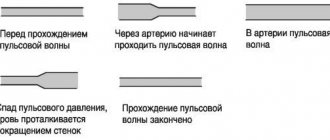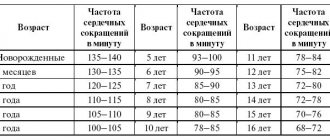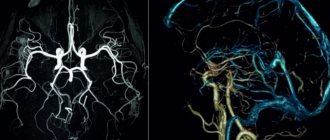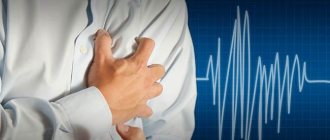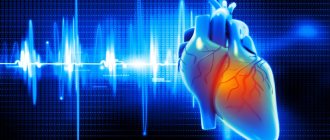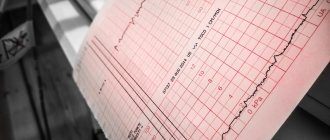What factors are taken into account when measuring?
- Times of Day. The heart rate, even in a completely healthy person, can change throughout the day, which is confirmed by daily ECG monitoring. The lowest readings occur at night or in the morning; in the evening, on the contrary, the heart rate increases, and the difference can be up to 10 beats. Such fluctuations in the absence of other signs are considered a physiological norm.
- Body position. When sitting, the frequency is always higher than when a person is lying down, but as soon as he gets up, the indicator goes off scale. This is due to the increased workload on the heart associated with physical activity.
Sir Floyer
At first, he did not pretend to be more, becoming a respectable burgher in Lichfield, quickly gained authority among the townspeople, in 1686 he was elected a justice of the peace for life, and then became Sir John. For what merits did the provincial doctor receive a knighthood, which was not then handed out to scientists left and right, as it is now, historians of medicine do not know for certain. He was never a court physician, although in non-professional literature he is often awarded the position of personal physician to King Charles II. He could indeed have met with Charles II in Oxfordshire, where the royal court had moved during the Great Plague of 1665–1666, but it is unlikely that the king would have invited a 16-year-old student to monitor his health.
Local historians in Staffordshire, where Lichfield is located, offer another, more plausible explanation. In 1686, King James II, the younger brother of Charles II, who had succeeded him on the throne a year earlier, paid an official visit to Lichfield.
He was met at the entrance to the city, among other eminent citizens, by Doctor Floyer. James II's position on the throne was precarious, and Lichfield, then a prosperous city in the west of England, had traditionally been pro-Parliament and anti-royalist in the English civil wars and revolutions of the 17th century. It was vitally important for the king to achieve the loyalty of the townspeople, and indeed the entire West Midlands, and for this he, in fact, came to Lichfield.
What Doctor Floyer promised the distinguished guest is, of course, not known to Staffordshire local historians. But what is certain is that the city doctor, John Floyer, soon became the bailiff, that is, the deputy mayor of the city, and then Sir John. And King James II was removed from the throne two years later by the Glorious Revolution. But at the same time, Sir Floyer’s reputation among the residents of Lichfield, as local historians note, did not suffer at all.
How to measure correctly?
The main rule is to do this at the same time of day in the same body position. It is best in the morning, immediately after waking up, without getting out of bed. You need to count the beats within a minute: the “economical” approach to measurement, when counting is carried out for 10, 15, 20 or 30 seconds, and then the result is multiplied, does not give an accurate picture. The reason for this is the unequal heart rate even within 1 minute.
There are different opinions about which area of the body is best to take measurements. Experts agree that the radial artery gives the most accurate readings. Place your thumb just below the first crease on your wrist and listen. To count, use three fingers: hold your hand motionless with your middle and index fingers, and measure with your thumb.
Lord of Namek
M.D. John Floyer was a provincial physician. He spent almost his entire long life, except for his years at Oxford, in his hometown of Lichfield, now a northern suburb of Birmingham. True, he also studied at Oxford for a long time: at the age of 15 he entered the university grammar school (secondary school), at the age of 19 he became a bachelor, at the age of 25 he became a master of medicine, and at the age of 37 he became a doctor of medicine. But he did not continue his university career; in 1680, at the age of 31, he returned to Lichfield and became a practicing physician there, later going to Oxford only once to defend his doctoral dissertation.
Dr. Floyer was the youngest son in the family of “Lord Hints” Richard Floyer and, according to the laws of the primogeniture, had to earn his own living. Historians write his father’s title in quotation marks because, although it is written so in the parish register of the town of Hints, this small family estate clearly did not reach the baronial rank, and its owner belonged to the category of small landed nobles - gentry, or gentlemen, as they are called. called. And the title Earl or Baron Hints itself sounded anecdotal (Hints are “hints” in English). In the modern table of class ranks, Dr. Floyer's family belonged to the middle class, nothing more.
Under what circumstances is it not recommended to measure your pulse?
There are a number of circumstances where the results will be biased. Sometimes this happens during a consultation with a cardiologist if the patient is too excited, but there are other situations.
- You should not check your pulse within an hour after eating, taking medications, or especially drinking alcohol. A lot of processes take place in the body, and the heart works at an accelerated pace.
- Indicators will be biased when a person is thirsty or hungry.
- The heart rate is always elevated after physical activity or training.
- Another reason to refuse the procedure is a massage, visiting a sauna or going to the beach: under the influence of high temperatures you should not expect objective information.
- Doctors do not recommend women to do calculations during menstruation, when hormonal changes occur in the body.
The ability to measure your pulse will come in handy sooner or later, so take into account all the nuances and practice on yourself and your loved ones. It is advisable to develop the skill in yourself so that in a critical situation you do not remember the equipment, but quickly come to the rescue.
Pulse and pressure
September 2, 2016
We all had our pulse and blood pressure taken. We know it doesn't hurt, but why are these indicators measured?
Whenever you visit a doctor or call an ambulance to your home, as a mandatory initial procedure, a specialist measures your pulse and blood pressure. But why is it so important to know these seemingly simple meanings of your body? And what do these numbers even mean? What are the reasons for high or low blood pressure? What are the dangers of an accelerated or, conversely, slowed heartbeat? To begin with, these two values show how the main part of a person works - the cardiovascular system. It is important because it is the blood that supplies oxygen and nutrients to all the cells of our body. Therefore, it is simply necessary to know when your so-called “river” system develops deviations in the form of contamination and decreased elasticity of the veins. So what pressure can be considered normal? Under what circumstances should you contact a specialist? Now let's look at all these aspects. Pulse. It, like pressure, has an extremely variable value. You've probably noticed how hard and fast your heart beats after exercise, and how uniform your heartbeat is at rest. There is no ideal value that everyone should strive for. In children, the heart contracts at a much higher rate than in an adult. On average, a reading of 65 - 75 beats per minute is considered normal. Therefore, when this value falls or rises by more than 20, it is already considered a deviation requiring prevention or treatment. For a healthy person, the rhythm of the heartbeat is also important. If the heart beats irregularly, it is called arrhythmia and is an extremely dangerous heart disease. A trained person involved in sports has a lower heart rate. This happens because the heart pumps more blood with each beat. Pressure. As with the pulse, everything is just as ambiguous here. The values depend on age, gender, physical activity and psycho-emotional situation. And everyone’s body is different, so the indicators may differ. We will talk about averages. When measuring blood pressure, we always hear two numbers, which are called the upper (systolic) and lower (diastolic) values. The first shows the force with which the blood presses on the walls of blood vessels during maximum contraction of the heart, and the second, on the contrary, in a resting situation. The difference between them is called pressure. On average, this difference should exceed 20 mmHg. Art. Low blood pressure leads to tachycardia, and high blood pressure is an indicator of atherosclerosis, heart failure, anemia, etc. It often happens to athletes that their average value is low, about 100/60, and yet they feel great. With age, the value increases. A newly born child has a normal measurement of 80/50 mm. rt. Art., and by the year of life it reaches 96/66 mm. rt. Art. In this regard, up to five years of age there is no difference between the sexes. At the age of 18-20 in men, 120/80 mm becomes satisfactory. rt. Art., and for girls 115/70 mm. rt. Art. By the age of seventy, the figures increase to 145/80-85 in the stronger sex and 155/85 mm. rt. Art. among representatives of the fair half of humanity. There is a concept called “working pressure”, at which the values may differ from the average, but the body still feels good. Therefore, try to always monitor your constant indicators. Moreover, with current technologies, this is available to everyone, just buy a tonometer. If you see that your cardiovascular system indicators are close to critical, immediately take care of your health: go to the doctor, start eating right and exercise. Remember that prevention is always easier and better than cure.
Tags:
- Prevention
- Pulse
- Arterial pressure
To leave a comment you must be an authorized user
Dr. Floyer
As for Dr. Floyer’s medical skills, little is known about this either. Dr. Floyer was probably a good general practitioner of his time. When the child of a city bookseller and owner of a parchment factory, Michael Johnson, was brought to him with scrofula (external tuberculosis), Dr. Floyer prescribed the “royal touch” procedure for baby Samuel Johnson.
Scrofula was then popularly called “King’s Evil,” and it was believed that to cure it, it was necessary for a royal person to lay hands on the patient. Then, in accordance with the teachings of Hippocrates, the excess phlegm will return to normal, the normal ratio in the patient’s body of blood, bile, lymph and phlegm (mucus, phlegm) will be restored and the disease will pass.
Samuel's parents took him to London, where Queen Anne Stuart touched the child at St. James's Palace. She never refused such requests from her subjects, if, of course, they reached her, and here the manufacturer from Lichfield did not pay for the costs of admission to the queen. The boy, of course, did not recover; he had to undergo surgery, the scars from which remained on his face, neck and body for the rest of his life.
When he grew up, he became a famous English writer, comparable in lifetime fame to Voltaire. It was he who said that patriotism is the last refuge of a scoundrel. And the costs of treating the child, as the same Staffordshire local historians write, undermined the welfare of the Johnson family and his father, manufacturer Johnson, went bankrupt.
Floyer heart rate monitor
Sir John himself dedicated his main scientific work, thanks to which he forever entered the history of medicine, to Queen Anne, a woman, as historians know, sickly, emphasizing in his dedication to the queen that the method he proposed for healing her subjects “earned the favor of three Roman emperors and the Emperor of China did not consider him unworthy.” If three Roman emperors could hardly be a convincing argument, the history of Rome included several dozen emperors, each more disgraceful than the other, then the emperor of China could not fail to impress the queen.
Sir John Floyer's thick 500-page scientific work summed up his enormous empirical work on measuring heart rate in people of different sizes, of different ages, healthy and sick with various diseases. It is impossible to say when healers began to feel the arterial pulse of their patients. They had probably always felt him, since the advent of the healing profession. And not to mention healers, it is impossible to imagine that a primate, having turned into a person with awareness of his “I,” would not feel his own pulse. At least out of pure curiosity.
But doctors began to build theories about the connection between the pulse and the state of human health much later, in ancient times in Europe and around the same time in China. In any case, the ancient medical treatises on the pulse date back to this time. During the Age of Discovery, Chinese treatises on the pulse reached Europe and made about the same impression on European scientists as Dr. Floyer expected the example of the Chinese emperor to make on Queen Anne.
And so it happened, since the Chinese emperors allowed their doctors to feel their pulse, which means, European medical scientists decided, they urgently need to take this into service. Dr. Floyer himself did not escape this epidemic. About a quarter of his book (120 pages), published in 1682, is taken up by a retelling of the notes of the German physician Andreas Kleier of the Dutch East India Company entitled "Specimen Medicinae Sinicae, sive Opuscula Medica ad Mentem Sinensium" ("Examples of Chinese healing, or Notes on Chinese vision of medicine"). But Dr. Floyer’s work cannot be called a compilation of all kinds of sources on pulse diagnostics, because most of it is devoted to pulse frequency.
It is difficult to say how it happened that before Dr. Floyer, none of his predecessors paid attention to the pulse rate. He was the first in both Europe and China to conduct a comparative analysis of arterial pulse rate, taking the number of pulse beats per minute as the standard. There is a story circulating on the Internet and even in scientific articles on the history of medicine that Sir John ordered a stopwatch with a one-minute dial from a watchmaker, and with its help he began to measure the pulse rate.
There is not a single word about a stopwatch in Dr. Floyer's book, but in order to be convinced of this, you have to read it from cover to cover, which is probably tedious. However, it is foolish to deny that Sir John could afford an expensive toy in the form of a stopwatch at that time, but he would hardly have allowed himself to recommend that all doctors get it: after all, he was a gentleman by birth and upbringing.
But the most important thing is that the title of his book, right on its cover, says in black and white: “Physician's Pulse-Watch; or an Essay to Explain the Old Art of Feeling the Pulse, and to Improve it by the help of a Pulse-Watc. The true Use of the Pulses, and their Causes, Differences and Prognostications by them, are fully explained, and Directions given for Feeling the Pulse by the Pulse-Watch, or Minute-Glass." Translated into Russian it sounds like this: “A doctor’s heart rate monitor, or an Essay explaining the ancient art of feeling the pulse and improving it with the help of a heart rate monitor. With a full explanation of the correct interpretation of the meaning of the pulse, its causes, differences and its prediction, as well as instructions for determining (frequency - Kommersant-Science) the pulse using a pulsometer, or a minute hourglass.” If in other respects you can still look for a double meaning if you wish, then Minute-Glass means only one single thing - an hourglass designed for one minute.
Thus, Dr. Floyer loses a head start over his predecessors in the form of an innovative chronometer-stopwatch (all of them, including the physicians of the Chinese emperors of the Qin, Han, Xin dynasties and others, had an hourglass), but gains further evidence of the extraordinary talent of the experimenter. During Dr. Floyer’s lifetime and for a long time afterwards, diagnosis by pulse rate was not widely used in medicine. Without additional equipment, this required the doctor to have a natural talent as a clinician, and this is not given to everyone.
Scientist Floyer
Dr. Floyer was engaged in science without interruption from receiving patients and magistrate duties. His first significant scientific publication was a monograph on the pharmacopoeia “Pharmako-Basanos: or the Touchstone of Medicines, discovering the virtues of Vegetables, Minerals and Animals, by their Tastes and Smells”, which can be roughly translated into modern language something like this: “Basics of medicinal remedies, or the Touchstone, which reveals the healing virtues of vegetables, minerals and animals by their taste and smell.”
It was followed by a major experimental work, “The preternatural state of animal humors described, by their sensible qualities.” In essence, it was a critical analysis of the Hippocratic theory of disease, although Dr. Floyer did not touch on the main provisions of the Hippocratic theory, considering it the only correct one. With it, he, in fact, begins this work: “The ancient teaching of Hippocrates divided the parts (organs and tissues - Kommersant-Science) of an animal into containing and containing: containing are vessels, and containing parts are juices, which also have a fluid nature." He further describes the results of vivisection, during which he not only examined and smelled the “juices” of various domestic animals, but also tasted them on his tongue.
It would be useful for medical students today to at least skim through this monograph by Dr. Floyer (it is available on the Internet in English) in order to get a feel for the essence of their future profession and to get an idea of how their predecessors in modern times treated patients with no other diagnostic instruments than own five senses. But something else was much more interesting here - Appendix II to this book of the 1696 edition entitled “Introductory Discourse to the Treatise on Asthma, containing an explanation of the old concept of the outflow of fluids through which asthma arises.”
In addition, Dr. Floyer’s title is in the same furious style that has recently become characteristic of domestic scientific publications, and not only in medicine. It gives in one phrase the entire modern etiology of asthma (impaired outflow of phlegm from the bronchi). This was the first scientific explanation of the mechanism of asthmatic suffocation. Floyer himself published his Treatise on Asthma two years later.
At the same time, at the very end of the 17th century, Dr. Floyer became interested in improving the health of his patients with cold baths and douses and quickly became a leading specialist in this hardening procedure. The seminal publication in this area of medicine was his book “An Inquiry into the right Use and Abuses of the hot, cold and temperate Baths in England” (1697 edition). .
The theoretical premise of Dr. Floyer's teaching on the benefits of cold baths was his postulate that for people living in cold climates (and the climate in England during the global cooling of the Little Ice Age, the second peak of which occurred precisely in the 17th century, was much harsher than now), heat, not to mention heat, contributes to clogging of pores on the skin and has a detrimental effect on the balance of humoral fluids in the body. This thesis, which is inherently true for the current era of global warming, has found a lively response in medical circles not only in England, but throughout Europe. Dr. Floyer gained followers who dedicated their own treatises on the benefits of cold baths to their guru, Sir John Floyer.
